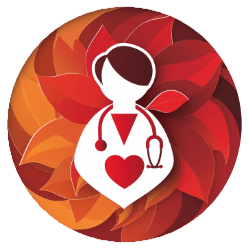In the bustling corridors of hospitals, where the pace never slows, you, as a nurse, find yourself in a relentless cycle of stress and responsibility. Yet, amidst the chaos, there lies a sanctuary of calm and strength within you, accessible through the practice of yoga.
Imagine transitioning from the high demands of your job to a state of profound relaxation and rejuvenation through just a few carefully chosen poses. Whether it’s the grounding serenity of Child’s Pose or the empowering lift of Warrior II, each posture offers you a unique way to combat the physical and mental pressures you face daily.
By integrating these seven best poses into your routine, you’ll discover not just relief, but a renewed sense of balance and well-being that carries you through your shifts.
So, let’s explore how these poses can transform your workday and beyond, offering you a haven of tranquility in the storm of your professional demands.
Key Takeaways
- Child’s Pose is essential for physical and mental relief, reducing tension and anxiety.
- Incorporating Cat-Cow Stretch and Warrior II Pose can enhance mental clarity and focus, reducing job-related stress.
- Legs-Up-the-Wall and Corpse Pose are important for overall well-being, promoting relaxation and improving sleep quality.
- Regular practice of these restorative yoga poses can lead to long-term benefits such as improved health, reduced stress, and enhanced resilience.
Child’s Pose
After a demanding shift, sinking into Child’s Pose can offer you the much-needed respite, gently easing the tension that accumulates in your lower back, hips, neck, and shoulders. As a nurse, you’re no stranger to stress, bearing the weight of countless responsibilities. But remember, caring for others begins with caring for yourself.
Child’s Pose, with its soothing embrace, is a sanctuary where you can lay down the burdens of the day. It’s not just about stretching; it’s a profound act of self-care that quiets the mind, reducing anxiety and fostering a sense of calm.
In those moments, enveloped in the comforting hold of Child’s Pose, you’ll find stress melting away, replaced by a tranquil energy. This pose isn’t just a physical relief; it’s a mental refuge. It improves your digestion, eases constipation, and, most importantly, offers a peaceful retreat from the pressures of nursing.
Embracing Child’s Pose after a long shift isn’t just beneficial; it’s essential. It’s a gentle reminder that to serve others effectively, you must first ensure your own well-being.
Cat-Cow Stretch
As you move through the Cat-Cow Stretch, you’ll find immediate relief in your back, easing the muscle tension that builds up from long hours on your feet.
This simple yet effective pose not only helps in alleviating physical strain but also enhances your mental clarity, cutting through the fog of job-related stress.
It’s a gentle reminder that taking a moment for yourself can significantly improve your day, both mentally and physically.
Benefits for Back
If you’re feeling the strain of long hours on your feet, the Cat-Cow Stretch can work wonders in easing your back pain and stiffness. Here’s how it benefits your back:
- Alleviates Pain: Gently stretching and mobilizing your spine helps soothe lower back discomfort.
- Improves Posture: By targeting muscles along your spine, it enhances flexibility, aiding in better posture.
- Promotes Relaxation: As a part of relaxation techniques, it releases tension in your back and shoulders, offering stress relief.
- Boosts Circulation: Increasing circulation to the spine delivers essential nutrients and oxygen, revitalizing the area.
Incorporating Cat-Cow into your routine can mitigate the effects of prolonged standing or sitting, making it a valuable tool in managing the physical demands of nursing.
Improving Mental Clarity
Engaging in the Cat-Cow Stretch can significantly sharpen your mental clarity, especially during those long, demanding shifts nurses often face. This yoga pose, by gently awakening the spine through arching and rounding the back, not only alleviates physical tension but also promotes mental relaxation.
More so, it encourages deep breathing, a critical component of stress management and mental health. By integrating this practice into your daily routine, you’re not just combating job pressure; you’re taking a proactive step towards enhancing your mental clarity.
Warrior II Pose
Facing the demands of your nursing job, adopting the Warrior II Pose, or Virabhadrasana II, can significantly bolster your stamina and focus. This stance isn’t just a physical exercise; it’s a resilience-building tool that integrates seamlessly into your routine, offering a potent remedy for the pressures you face daily.
Here’s why Warrior II Pose stands out among the best yoga poses for nurses:
- Strengthens Core Muscles: By engaging your legs and arms simultaneously, it builds physical strength, enhancing your ability to endure long shifts without compromising your posture.
- Enhances Focus: The pose demands concentration, which, over time, helps improve your attention to detail—a critical skill in nursing.
- Promotes Deep Breathing: Deep, controlled breathing is at the heart of this pose, helping reduce stress and anxiety, vital for maintaining your mental health amidst job pressures.
- Boosts Confidence: As you master the pose, the sense of accomplishment and inner strength you develop translates into increased confidence, both on and off the job.
Incorporating Warrior II Pose into your routine can provide a significant boost to your physical and mental health, proving invaluable in managing the stressors inherent in nursing.
Tree Pose
Shifting your stance to the grounding Tree Pose, or Vrksasana, can significantly enhance your balance and focus, offering a serene respite from the bustling demands of nursing. As you root one foot into the ground and lift the other, finding your balance, you’re not just strengthening your legs and core but also inviting calm into your hectic day. This simple act of standing tall, like a steadfast tree, can be a powerful metaphor for resilience in the face of challenges.
| Benefits | How It Helps Nurses |
|---|---|
| Improves balance | Enhances ability to navigate the fast-paced nursing environment with grace. |
| Strengthens muscles | Builds physical resilience needed for long shifts. |
| Stretches body | Relieves physical tension from standing or walking. |
| Relieves stress | Offers mental clarity and stress relief through focused breathing. |
| Adaptable | Can be modified to fit any skill level, making it accessible for all nurses. |
Incorporating Tree Pose into your routine is more than just a physical exercise; it’s a moment of self-care. It allows you to reconnect with your purpose, reminding you that, like the roots of a tree, you’re grounded in your passion for caring for others. Amidst the stress, Vrksasana can be your quiet haven of stress relief and rejuvenation.
Bridge Pose
After exploring the grounding benefits of Tree Pose, let’s now look at how Bridge Pose can equally uplift and support your well-being amidst the demands of nursing.
Supported Bridge Pose (Setu Bandhasana) isn’t just another item on the list of energizing yoga poses; it’s a beacon of relief for nurses like you, seeking to lower stress and rejuvenate after long shifts. Here’s how it can help improve your daily routine:
- Relieves Back Pain and Fatigue: By stretching the chest, neck, and spine, this pose combats the physical strain from hours of standing or walking, offering much-needed relief.
- Reduces Anxiety: Its calming effect on the mind is a balm for the high-pressure environment you navigate, helping you maintain your composure and care for others with a steady hand.
- Opens the Heart and Improves Posture: Engaging in this pose promotes relaxation and a sense of rejuvenation, making it easier to approach each task with a renewed spirit.
- Increases Flexibility and Strength: Essential for dealing with the physical demands of nursing, it supports your body’s resilience, enabling you to serve with greater ease and less discomfort.
Incorporate Bridge Pose into your routine to find a moment of tranquility and strength, even on the busiest days.
Legs-Up-the-Wall
If you’re feeling the weight of your shifts in your legs and back, Legs-Up-the-Wall pose, or Viparita Karani, might just be the rejuvenating solution you need. This simple, yet profoundly effective pose not only helps combat nurse burnout by easing stress and anxiety, but it also promotes better sleep, vital for those long, demanding hours you dedicate to serving others.
Here’s a quick guide to get you started:
| Benefit | Explanation |
|---|---|
| Alleviates Swelling | Elevating your legs improves circulation, reducing inflammation and relieving tired, swollen legs. |
| Reduces Lower Back Pain | The gentle stretch relaxes the lower back muscles, providing relief from discomfort. |
| Calms the Nervous System | Initiates a state of relaxation, helping to mitigate stress and enhance sleep quality. |
| Eases Menstrual Cramps | Aids in relieving discomfort associated with menstrual cramps through gentle stretching. |
| Promotes Relaxation | Regular practice fosters a deep sense of mental and physical rejuvenation, essential for nurses battling job pressure. |
Incorporating Legs-Up-the-Wall into your daily routine is a step towards safeguarding your well-being, allowing you to continue providing exceptional care with renewed energy and resilience.
Corpse Pose
For nurses overwhelmed by the physical and emotional demands of their job, Corpse Pose offers a serene escape, promoting deep relaxation and recovery. As a cornerstone of Restorative Yoga, Corpse Pose (Savasana) is more than just lying down. It’s a deliberate practice that rejuvenates your body and mind, providing a much-needed pause in your hectic schedule.
Here’s why incorporating Corpse Pose into your daily routine is essential:
- Reduces Muscle Tension and Fatigue: By relaxing every part of your body, you’re allowing yourself to release the physical burdens of long shifts and demanding workloads.
- Calms the Nervous System: It’s a natural way to help release stress hormones, easing your mind into a state of peace and tranquility.
- Enhances Self-awareness and Mindfulness: Practicing self-care is vital, and through Corpse Pose, you’re giving yourself the opportunity to reflect and connect with your inner self.
- Promotes Overall Well-being: Regularly dedicating time to this pose can improve your sleep quality, boost mental clarity, and increase resilience against job pressures.
Frequently Asked Questions
How Do You Work Under Pressure as a Nurse?
Facing pressure as a nurse is like navigating a storm; you stay calm, prioritize self-care, practice mindfulness, build a strong support network, and embrace resources for well-being to shine brightly in your compassionate service.
How Do You Handle Workplace Stress as a Nurse?
To handle workplace stress, you should practice deep breathing and restorative yoga poses. Regularly exercising, setting healthy boundaries, and seeking support from your network can also significantly reduce stress and improve your well-being.
What Is the Most Stressful Nursing Job?
You’re likely wondering which nursing job tops the stress charts. It’s generally agreed that emergency room (ER) nurses face the most stress due to the unpredictability and severity of cases they encounter daily.
How Do Nurses Sometimes React Negatively to Stress?
When the going gets tough, nurses sometimes find themselves battling burnout, compassion fatigue, and physical symptoms like headaches. These reactions to stress can lead to unhealthy coping mechanisms, impacting both their health and job satisfaction.





